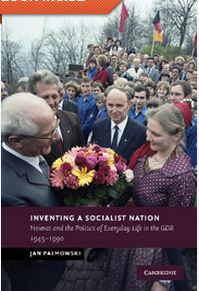Migration and Refugees in the Balkans and East Central Europe between the Fifteenth and Twentieth Centuries
Hungarian Historical Review – issue 2017/3
Deadline : September 30, 2016.
Special Editors: Ulf Brunnbauer & Gábor Demeter
Migration and refugee flight have always been key phenomena in the Balkans and
East Central Europe, shaping both the ethnic-religious character of the region
and its social and economic structures. Some of the consequences of population
movement are obvious, such as ethnic diversity or ethnic homogeneity, and
movements of peoples have often been a cause or at least a pretext for
tensions
and political divisions in the region. Other consequences are less immediately
apparent, including the contributions of migration to the economic development
of the region. One of the key aims of this thematic issue is to draw attention
to these less frequently emphasized effects of migration and population
movement from a longue durée perspective (increased economic potential,
contributions to social and cultural innovation, facilitation of the division
of labor, as well as the complexities of the processes of
integration/exclusion/re-integration).
Economic considerations are relevant, but other phenomena related to
migration,
such as the motives for mass migrations from micro and macro perspective, the
religious and social composition of migrant groups, and the perceptions of
migrants and refugees among the majority populations also merit examination.
The goals of migrant groups, the problems that arise because of population
movement, and the ideas of decision-makers concerning the ways in which to
address these problems should also be taken into consideration in order to
reveal interactions among different groups of agents.
Another key topic is the processes of integration into the socio-economic
system. The questions one might consider include:
– what cultural-economic-political niches did migrants and refugees fill;
– how was the preservation of migrant culture promoted, or how did government
policies focus instead on diminishing differences and promoting assimilation;
– to what extent did population movement (migration/refugees) contribute to
changes in the ruling elites or in economic systems;
– how were different groups of newcomers dealt with by governments.
We welcome articles on both spontaneous and forced, internal (within a
country)
and interregional (within for instance the Balkans or Central Europe), and
international migration (also from a micro perspective), as well as shifts
that
were sudden or slow.
We welcome case studies, studies based on also on comparative approaches, and
studies that offer overviews of a topic or perspective of inquiry, such as
studies in microhistory, longue durée, temporal or spatial comparisons (for
instance perceptions of refugees and migrants, shifts in the policies of a
given state or nation concerning migrants over the course of centuries,
differences in the attitudes of several countries regarding the same migrant
group), etc. Differences in behavior and the immigration culture of
homogeneous
and heterogeneous host nations could also be considered.
We invite the submission of abstracts on the questions and topics raised
above.
Please send an abstract of no more than 500 words and a short biographical
sketch with a selected list of the author’s five most important publications
(we do not accept full CVs).
The editors will ask the authors of selected papers (max. 10,000 words) to
submit their final articles no later than January 31, 2017. The articles will
be published after a peer-review process.
We provide proofreading for contributors who are not native speakers of
English.
All articles must conform to our submission guidelines:
http://hunghist.org/index.php/for-authors .
The deadline for the submission of abstracts: September 30, 2016.
Proposals should be submitted by email: hunghist@btk.mta.hu
The Hungarian Historical Review is a peer-reviewed international quarterly of
the social sciences and humanities the geographical focus of which is Hungary
and East-Central Europe.
For additional information, including submission guidelines, please visit the
journal’s website: www.hunghist.org












